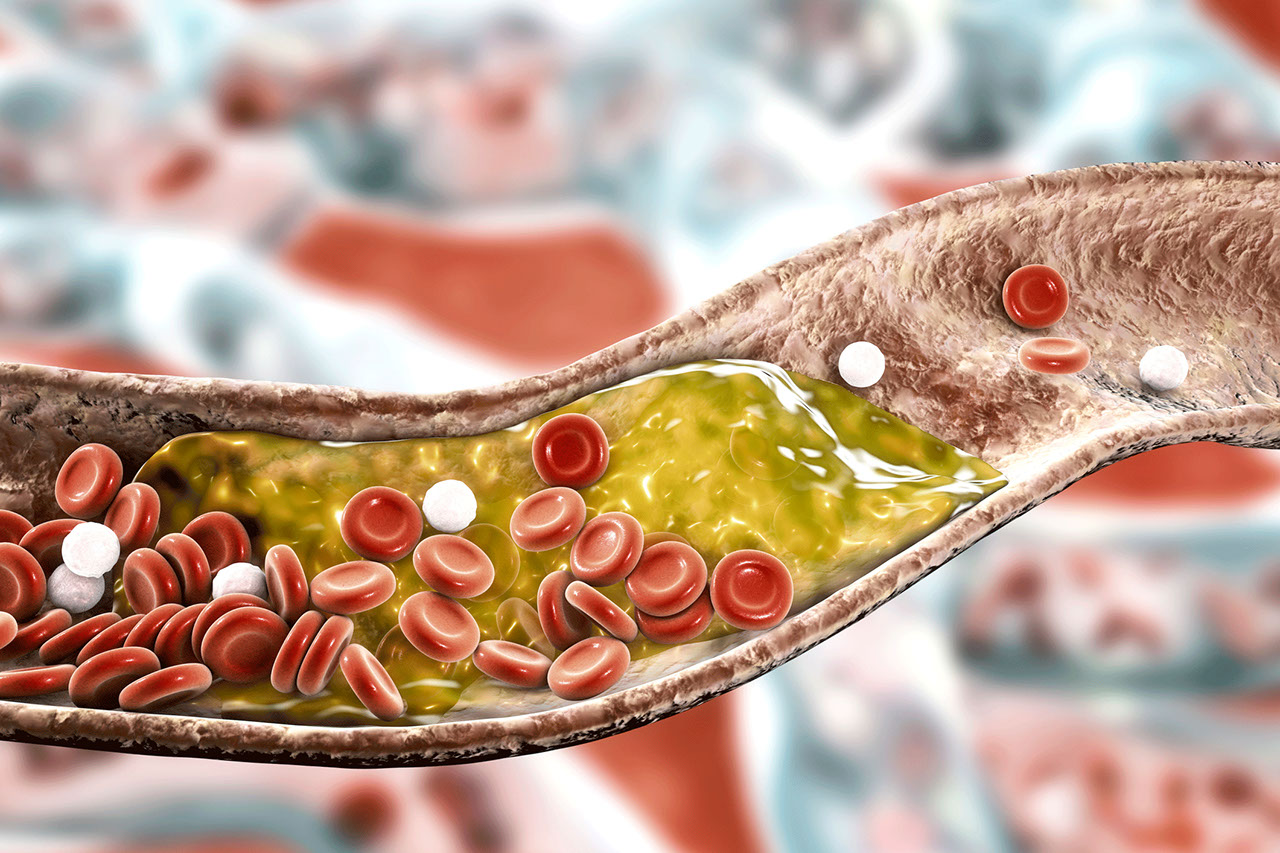What Is Arteriosclerosis (Atherosclerosis)?

Arteriosclerosis, often called hardening of the arteries, can affect any part of the body, not just the heart or brain. Here’s what you should know.
What is arteriosclerosis?
Your arteries ought to be flexible, but over time they can stiffen. Arteriosclerosis (from the Greek arteria, meaning artery, and sclerosis, or hardening) is the general term for hardening of the arteries. This can lead to blockages. Arteries carry oxygenated blood full of nutrients from the heart to organs throughout the body. If the flow is blocked to any area, it can be starved and die.
The arterial wall has three layers, with the innermost one called the intima, where you are most likely to get arteriosclerosis.
There are three recognized types of arteriosclerosis:
- Atherosclerosis (hardening from plaque on the intima)
- Arteriolosclerosis (which affects small arteries called arterioles)
- Monckeberg medial calcific sclerosis (calcium deposits in the muscular middle layer of artery walls)
Sometimes, the terms atherosclerosis and arteriosclerosis are used interchangeably.
YOU MIGHT ALSO LIKE: The Four Types of Heart Disease
What is atherosclerosis?
Fats, cholesterol, and other chemicals can build up into a waxy substance called plaque that lines the innermost layer of artery walls, hardening them and restricting blood flow. The process may begin in childhood, possibly because of injury inside an artery. Blood cells and other substances clump at the injury site and build up in the inner lining of the artery. Eventually this can cause clots in the blood or other problems.
What are the symptoms of atherosclerosis?
If you catch symptoms early, you may be able to avoid an emergency like a heart attack or stroke.
If the problem occurs in the arteries near the heart (coronary artery disease) you may feel chest pain or pressure, called angina. This might progress into a heart attack.
If a blockage occurs in the arteries leading to your brain (carotid artery disease), you may have what’s called a transient ischemic attack (TIA). You might feel sudden numbness or weakness in your arms or legs. You may be unable to speak or talk with a slur. You might lose vision in one eye or the muscles in your face might droop. These are the early signs of a stroke on its way.
If it happens in the arteries in your arms and legs (peripheral artery disease), the affected limbs may become less sensitive to heat and cold. You might notice numbness in the affected limb or pain.
If you have atherosclerosis in the arteries leading to your kidneys, you might get high blood pressure. If your kidneys don’t get enough oxygenated blood, they may eventually allow waste to accumulate in your blood stream (kidney failure).
Weak spots in an artery in the brain, chest, or abdomen may develop a bulging blood vessel (aneurysm) that can leak or break open, bleeding into other parts of your body. How serious this is depends on the location of the aneurysm.
What are the risk factors for atherosclerosis?
Most of the time, patients don’t notice a problem until part of the body is starved of blood. Pay attention if your doctors tell you that you have high blood pressure, high cholesterol, or high triglycerides. These can all lead to atherosclerosis.
Smoking is another risk factor.
Insulin resistance, diabetes, or obesity also put you a risk.
If you have lupus or another condition that causes chronic inflammation, you and your doctors should be on the lookout for atherosclerosis.
How can you prevent atherosclerosis?
Take care of yourself. You know what you need to do: Quit smoking, eat a healthy diet, exercise regularly, and maintain a normal weight. Treat diabetes or high blood pressure as recommended by your doctor, taking any prescribed medicines regularly. These steps will both treat and prevent atherosclerosis.
Updated:
April 19, 2022
Reviewed By:
Janet O’Dell, RN